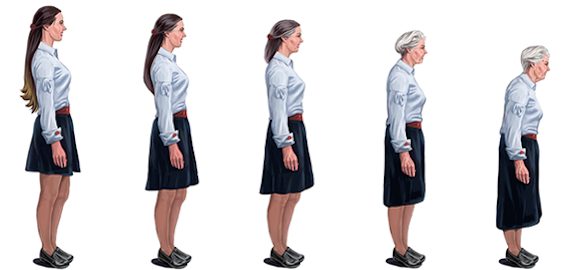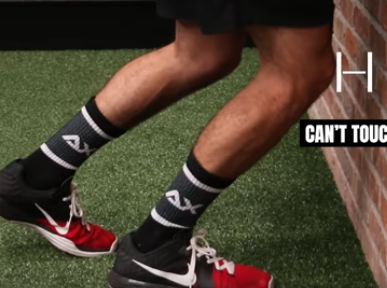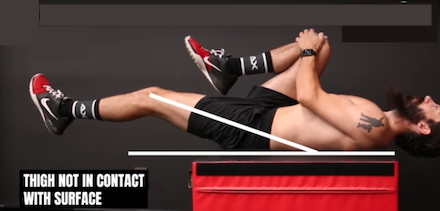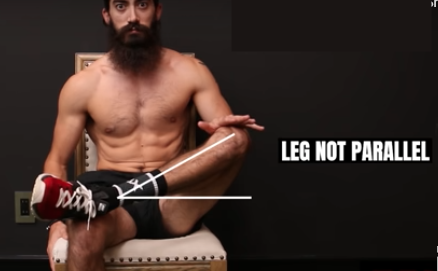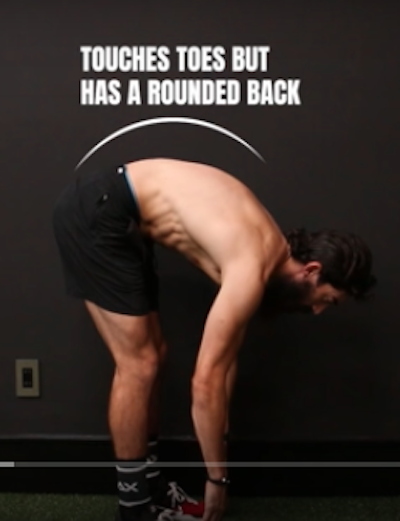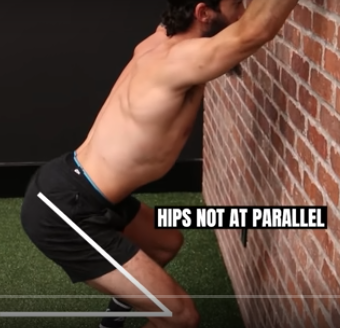Is Posture and Cognitive Decline Linked?
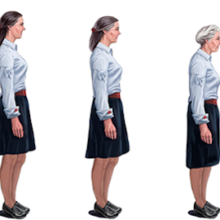
A new study links posture and cognitive decline. Is that even possible? Find out.
Is there a link between posture and cognitive decline?
That question was evaluated by researchers at Shinshu University in Japan in a paper published in May, 2022 entitled, Detection of cognitive decline by spinal posture assessment in health exams of the general older population.
My first reaction was, I hope not. I mean, who has good posture in an era when so many of us are bent over the computer or smart phones, not to mention what happens as we get older? Surely, being bent over doesn’t mean our brains start to hiccup?
Let’s find out.
Here's what we're going to tackle:
What Happens to Our Spines As We Age
The Medical University of South Carolina says that age has a big, negative effect on our bones, muscles and joints — all part of the musculoskeletal system that defines our posture.
Consider these factoids:
- Woman at menopause and men at around age 65 lose calcium in the bones that results in the loss of bone density. In the spine, less dense bones can contribute to poor posture.
- As we age, the intervertebral discs — those gelatin-like cartilage that separate the vertebrae — harden, compress and lose flexibility resulting in a shorter spine that tilts forward, called “kyphosis”.
- We lose muscle mass as we age (“sarcopenia”), and it’s replaced by fat and/or fibrous tissue that weakens muscle — all this contributes to an exaggerated curvature of the spine.
- Some of the pathologic processes that can occur with normal aging are fractures of the bones and arthritis that make the bones and discs more rigid, curved and painful.
OK, none of that is surprising. What is an eye-opener is that any of this has something to do with some link between posture and cognitive decline.
The Link Between Posture and Cognitive Decline
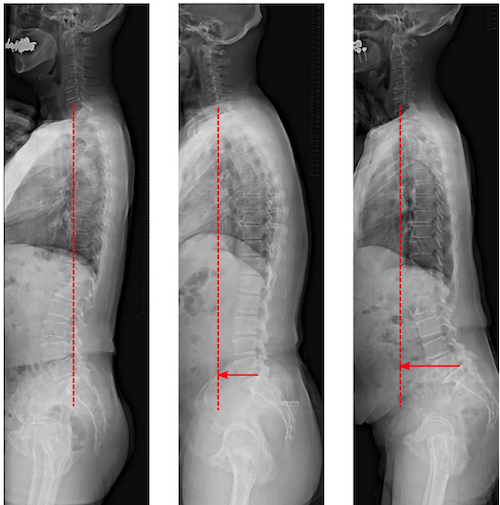
The spinal column posture was evaluated by the examination. The left shows the posture in which the anterior-posterior balance of the spinal column is balanced, and the center and the right are the upper body protruding forward with respect to the pelvis and the center of gravity forward. As we get older, the center of gravity tends to move forward. By evaluating this, it is possible to detect a slight decline in cognitive function. Credit: Nishimura, H., Ikegami, S., Uehara, M. et al.
The question of whether cognitive decline may be identified by, in layman’s terms, a bent over posture, was investigated in the Shinshu University study via a large-scale survey of persons aged 50 to 89 years.
Although spinal alignment change and cognitive deterioration are individually acknowledged as age-related phenomena, no studies have examined the associations between impaired spinal curvature and sagittal spinal balance (both being an important barometer of health status in seniors) and mild cognitive impairment (MCI).
In this case, MCI is defined to be a transitional condition between cognitive decline during the normal aging process and very early dementia. Other attributes of MCI are:
- Problems with memory, language, thinking and judgment, but not as severe as with dementia, even though MCI can advance to dementia.
- Gait slowing is common among patients with this condition.
- Activities of daily living are already adversely affected at the MCI stage.
The study sought to determine if diminished cognitive function is detectable by the degree of spinal balance anteriorization (basically, the spine tilting forward). As such, the investigation aimed to determine whether cognitive deterioration could be detected by spinal posture assessment.
Fast answer; it did:
Subjects are more likely to have signs of moderate cognitive decline the more the head and neck protrude in front of the pelvis when seen from the side.
“Impaired walking, standing, and standing balance have been related to elevated SVA [sagittal vertical axis], and previous studies showed SVA to be correlated with balance ability. Diminished walking, standing, and balance have been associated with poor cognitive function in older people as well. Therefore, we hypothesized that spinal imbalance might not only indicate poor motor function, but also reduced cognitive ability”.
Correlation or Causality?
Like with most studies, the pertinent question to consider is whether A and B are correlated, or does A cause B. Correlation is often observed; causation much less so. And in this study, I found no evidence of causation; meaning, in effect, that poor posture causes mild cognitive impairment.
The study concludes:
“In conclusion, spinal balance anteriorization was significantly associated with cognitive function decline in Japanese older adults.”
“Associated” is not causal, but nonetheless, this study does underscore the importance of improving your posture. As the study states:
In older adults, exercise training may lessen or even stop the progression of dementia.
In my view, even a hint that poor posture can be in some way linked to cognitive decline is enough incentive to do a better job of getting in structural alignment. If you’re with me on that point, let’s check out how to improve our posture.
How To Restore Your Posture
I spent some hours reviewing YouTube videos of various experts demonstrating how to restore properly aligned posture. Basically, there are two components to this:
- Stretching, and
- Strengthening.
The first two videos are by physical therapist Jared Backstrand. They are similar, but I include them both because the second adds some lower spine exercises that the first did not address.
Go here for the roller he mentions, and these are the bands I use. (Check out the band specs to ensure the resistance is appropriate for you.)
As you would expect from physical therapist and weight lifting coach extraordinaire, Jeff Cavaliere, the third video is quite comprehensive. What I especially like is that Jeff shows us how to test where our postural problems are and then offers what corrective exercises will fix them.
Here’s some screenshots of Jeff’s understudy, Jessie, to show you what I mean:
Here’s the video that will present each of the issues pictured above, what the correct alignments should be, and what you can do to get there.
Well, that’s a wrap. I leave you with my 2 cents, which is that irrespective of some worry about cognitive decline, we will all enjoy our lives better if we endeavor to build a strong, balanced and properly aligned posture.
So, get cracking!
Last Updated on August 27, 2022 by Joe Garma

